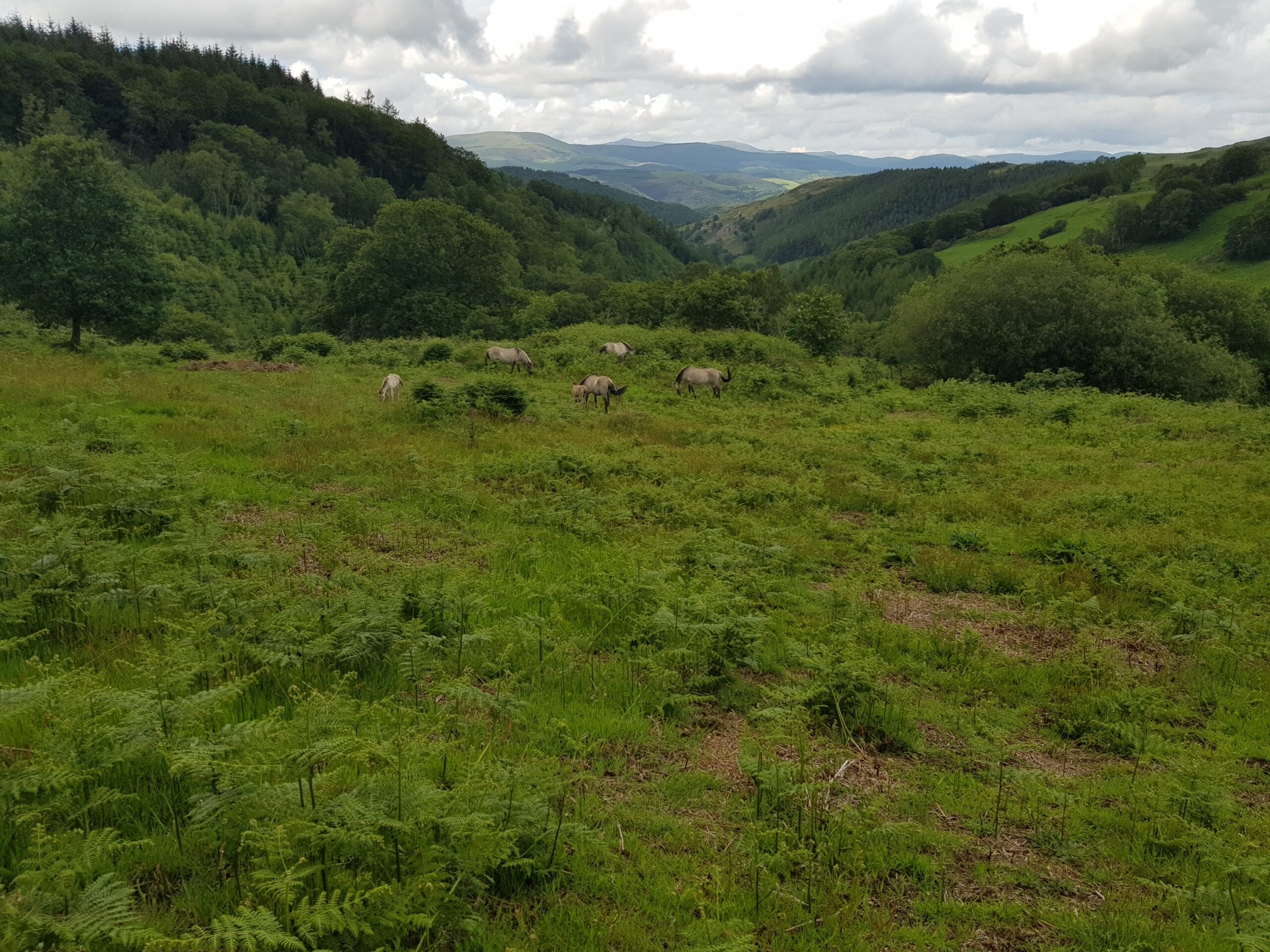
Does tree planting have a place in our minimal intervention approach? On this site, a decision to not plant trees is a decision to maintain the site free from trees, and can equally be seen as an intervention. Humans deforested the area, and humans have the capacity to restore tree cover. Wildlife will benefit from a restored large area of upland wood pasture mixed with other habitats. These are the considerations which inform our ongoing programme of planting a few hundred trees each year across the site.

Oak planted in hawthorn

Bracken, no trees present – 2018

Bracken, a few trees present – 2021

This strategy mimics the process identified by Franz Vera in his seminal work Grazing Ecology and Forest History.
Knepp provides a short summary of Vera’s ideas and their inspiration for Knepp Wildland. And specifically on the role of thorns, see this short video with Franz Vera on Kneppflix.
Birch planted in hawthorn
Tree planting in a grazed landscape has huge potential for the restoration of nature across the landscape. As Steve Watson’s work demonstrates, the tree cover reduces gorse and bracken, allowing grass to grow between the trees, and so increases the amount of pasture for livestock. The more sheltered environment provides better welfare conditions for the animals and increases their growth and resilience. The current debate about trees or sheep in the uplands is missing a crucial point: we can have the trees and the grazing animals together in the landscape with real benefits for farming and for wildlife.

Be careful where you get your blackthorn material! Most bushes round our way are hybrids of blackthorn and wild plum, and I suspect many nurseries are unable to guarantee the status of their material